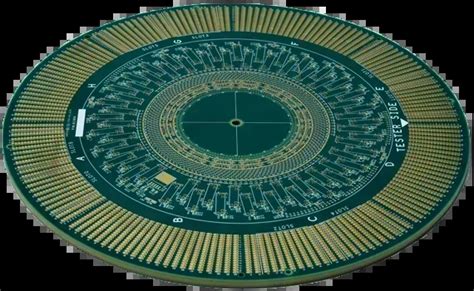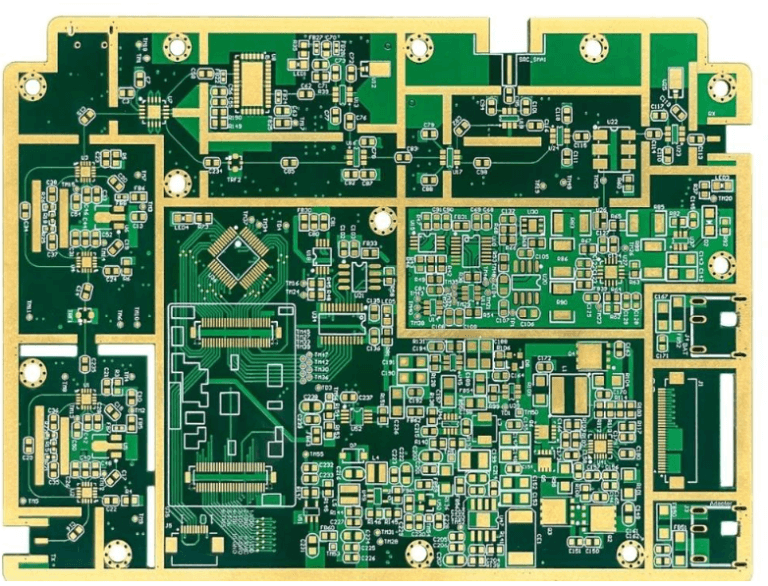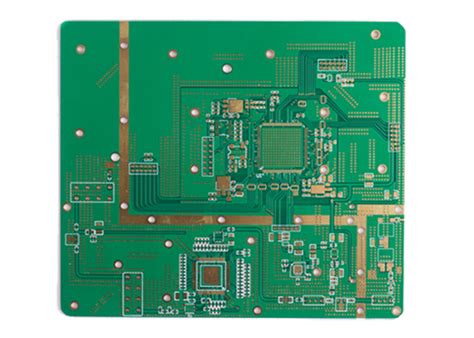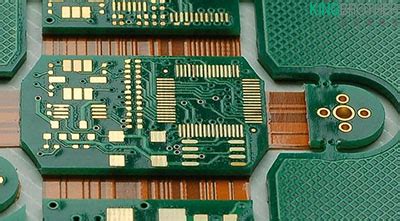Mastering PCB Assembly: A Guide to Successful Creation Techniques
Key Takeaways
Mastering PCB assembly is essential for anyone involved in electronics production. Understanding the intricacies of pcba can significantly enhance the efficiency and success of your projects. Key techniques in pcb design and layout lay the foundation for high-quality assemblies. Be it choosing the right materials or following a structured assembly process, each step contributes to the overall performance of the final product.
Implementing best practices in soldering and component placement is crucial to avoid common pitfalls that can lead to inefficiencies. For instance, proper alignment and spacing between components can minimize interference and ensure better functionality. Additionally, troubleshooting common issues that may arise during assembly helps to streamline the production process, allowing for quicker resolution and improved outcomes.
Staying informed about the latest innovations in pcb technology equips manufacturers with tools to enhance their assembly processes. Advanced techniques not only improve precision but also optimize manufacturing time, resulting in cost savings and increased productivity. By adopting a comprehensive approach that encompasses design, materials, and techniques, individuals can achieve remarkable success in pcb assembly projects that stand out in today’s competitive electronics landscape.
Understanding the Basics of PCB Assembly
PCB assembly, often referred to as PCBA, is a critical process in the production of electronic devices. At its core, PCBA involves several key steps, including component acquisition, placement, soldering, and inspection. Understanding these foundational elements is essential for anyone looking to create reliable and efficient electronic products.
To start with, the design of a printed circuit board (PCB) needs meticulous attention to detail. The design phase serves as the blueprint for all subsequent processes, where engineers must consider factors like component spacing, signal integrity, and thermal management. Once the design is finalized and prototyping is complete, the actual assembly can begin.
The material selection also plays a vital role in PCB assembly. Choosing high-quality substrates and components can significantly affect the performance and longevity of the entire assembly. The most common substrate materials are FR-4 and polyimide, which are selected based on their electrical properties and thermal handling.
When it comes to placement and soldering of components onto a PCB, automated pick-and-place machines are typically employed for high-volume production. These machines ensure precise placement of components on the board. Following placement, soldering processes—such as wave soldering or reflow soldering—complete the electrical connections between components and the PCB.
To illustrate these concepts further, let’s look at some key challenges that engineers may encounter during PCB assembly:
| Challenge | Potential Solution |
|---|---|
| Misalignment of Components | Use advanced automated placement machinery |
| Solder Bridging | Optimize solder paste deposition techniques |
| Thermal Management Issues | Implement appropriate cooling measures |
In essence, understanding these basic tenets of PCB assembly allows for more effective troubleshooting while fostering innovation in electronic design. A mastery of these fundamentals sets a strong groundwork for achieving success in more advanced techniques that follow in the PCB assembly process.
Key Techniques in PCB Design and Layout
When embarking on PCB assembly, gaining a strong command of design and layout techniques is crucial for producing reliable and efficient circuit boards. One fundamental approach involves utilizing layer stacking effectively. By arranging multiple layers, designers can optimize space and ensure that power distribution remains balanced, reducing noise and interference in pcba applications. Another key technique is the thoughtful placement of components, which should minimize trace lengths to enhance signal integrity. Proper routing of traces is also vital; adhering to guidelines regarding trace widths and spacing helps to manage the thermal dynamics during operation.
In addition to these practices, considering the thermal management of the board is essential. Incorporating pads for heat sinks or selecting materials with favorable thermal properties can dramatically impact the overall performance of the assembly in high-demand scenarios. Finally, utilizing CAD (Computer-Aided Design) software not only streamlines the design process but also aids in verifying that layouts meet all prescribed electrical standards before hardware production begins. By mastering these key techniques, engineers can greatly improve their ability to create robust pcb assemblies that support a wide range of electronic applications efficiently.
Essential Materials for Successful PCB Creation
In the world of PCB assembly (also known as PCBA), choosing the right materials is crucial to achieving optimal results. At the heart of effective PCB creation are several fundamental components that enhance both functionality and reliability. First and foremost, the substrate material plays a vital role; popular options include fiberglass epoxy (FR4), polyimide, and ceramics. Each material possesses unique thermal and electrical properties that cater to different applications, making it essential to select the correct base material according to project specifications.
Additionally, copper is extensively used in circuit board design for creating conductive pathways. The thickness of copper layers can affect both performance and manufacturability; common choices range from 1 oz to 6 oz per square foot depending on current-carrying requirements.
Components also form a significant part of the materials for PCBA. Soldering technique—whether through-hole or surface mount—dictates specific component designs, influencing placement strategy and assembly flow. Solder itself, whether lead-based or lead-free, requires careful consideration due to regulatory standards and application environments.
“Take time to assess your project needs when selecting materials; compatibility can significantly affect longevity and performance.”
Lastly, integrating tools such as solder masks and silkscreens not only aids in protecting the board but also enhances readability in assembly procedures. Using these essential materials effectively will streamline your PCB assembly process while leading to a more efficient end product. Overall, understanding the properties and applications of these materials ensures that your PCB designs are not just functional but also robust under various conditions.
Step-by-Step Guide to PCB Assembly Processes
PCB assembly, often referred to as PCBA, is a meticulous process that involves several critical steps to ensure the successful integration of various electronic components onto a printed circuit board. The journey of pcb assembly begins with the design phase, where careful consideration is given to the layout and placement of components. This is followed by the preparation of materials, which involves procuring high-quality essential materials such as solder paste, capacitors, resistors, and integrated circuits.
Once everything is in place, the process typically proceeds with soldering, where components are affixed to the PCB surface using either manual or automated techniques. It’s important for technicians to maintain precision during this stage, as proper solder joints are crucial for functionality and reliability. With modern techniques like surface mount technology (SMT) becoming more prevalent, understanding the nuances of each method is essential for optimizing production efficiency.
After the assembly stage comes inspection and testing, which are indispensable in identifying any potential errors or defects before moving on to final packaging. Each of these steps plays a significant role in ensuring that the pcb assembly process not only meets industry standards but also contributes to creating durable and reliable electronic devices. As technology evolves, staying informed about advancements in assembly processes will empower practitioners to improve their techniques and streamline production workflows for better overall performance in electronics manufacturing.
Best Practices for Soldering and Component Placement
Successfully executing pcb assembly relies heavily on proficient soldering techniques and precise component placement. To achieve optimal results in pcb assembly, it’s crucial to ensure cleanliness. The surfaces of both the printed circuit board (PCB) and the components should be free from any contaminants, such as dust or oils, which can interfere with adhesion. Using isopropyl alcohol and lint-free wipes is recommended for this purpose.
Furthermore, when placing components, a systematic approach can significantly increase efficiency. It’s ideal to begin with the smallest components, such as resistors and capacitors, and progress to larger ones. This technique minimizes the risk of accidentally displacing smaller parts during soldering.
Moreover, attention to detail in component orientation is vital; ensuring that polarized components, like diodes and electrolytic capacitors, are in the correct position prevents functional failures in the final assembly. Utilizing solder paste stencils can also enhance precision by allowing controlled application of solder paste to pads on the PCB.
When it comes to the soldering process itself, employing a steady hand is essential. For manual soldering, using a soldering iron at an appropriate temperature—generally between 350°C to 400°C—helps achieve a clean joint with minimal risk of thermal damage to nearby components. Additionally, for more complex assemblies or larger production runs, considering automated options like surface mount technology (SMT) can greatly improve both speed and consistency.
In summary, adhering to these best practices not only facilitates effective pcba but also enhances reliability and performance of electronic devices in their operational settings.
Troubleshooting Common PCB Assembly Issues
When engaging in PCB assembly, it is crucial to be prepared for a range of complications that may arise during the production process. Common issues include misalignment of components, insufficient solder joints, and unexpected circuit failures. These challenges can stem from a variety of factors such as inaccurate designs, improperly stored materials, or even environmental conditions during assembly. To overcome these obstacles, it is important to perform regular checks and adhere to strict quality control procedures. Techniques such as visual inspection and automated optical inspection (AOI) are effective in identifying problems early in the PCBA process. Moreover, seeking feedback from team members involved in different stages of assembly can provide valuable insights into potential areas of improvement. Another key strategy for effective troubleshooting is maintaining a comprehensive database of past issues along with resolutions; this resource can serve as a vital reference for future projects, helping to ensure quick and effective responses to any unforeseen complications that crop up during the PCB assembly process. By integrating these practices into your workflow, you can significantly enhance the reliability and efficiency of your electronic production efforts.
Innovations in PCB Technology and Techniques
The landscape of PCB assembly is continuously evolving, driven by advancements in technology and innovative methodologies. Recent innovations have significantly enhanced pcba processes, making them more efficient and cost-effective. One prominent technology is the introduction of automated assembly machines, which utilize robotics and artificial intelligence to enhance precision during component placement. These machines reduce the potential for human error and speed up production times, making them invaluable in high-volume manufacturing environments.
Moreover, the development of flexible PCB materials has opened new avenues for design; engineers can now create circuit boards that bend and conform to various shapes, expanding the possibilities in electronic device design. Another innovation is advanced soldering techniques, such as selective soldering and laser soldering, which provide cleaner joints and improved reliability for complex assemblies.
Additionally, software advancements have revolutionized the way designers approach pcba, with sophisticated simulation tools allowing for thorough analysis of circuit performance before physical creation. These tools enable engineers to predict potential issues and optimize designs early in the development process.
As these technologies continue to develop, they not only enhance the performance and reliability of electronic devices but also contribute to sustainability efforts within the industry by reducing waste and allowing for smarter resource management during production. Embracing these innovations is crucial for achieving success in PCB assembly, as they pave the way for more efficient production techniques that meet the demands of today’s rapidly advancing technological landscape.
Conclusion
In the realm of PCB assembly, understanding the intricate processes involved is crucial for anyone engaged in electronics production. Mastery in PCBA revolves around not only the knowledge of individual components and their placement but also the overarching techniques used to create an efficient assembly process. With a solid foundation in both design and layout principles, practitioners can significantly enhance the reliability and performance of their printed circuit boards. The choice of materials plays a pivotal role in this, as using the right substrates and soldering materials can avert many common pitfalls associated with PCB assembly. By adhering to best practices for solder joint quality and component placement, one can ensure a robust finished product. Additionally, staying abreast of innovations in PCB technology allows engineers to implement cutting-edge techniques that improve productivity and streamline assembly workflows. Overall, achieving success in creation processes hinges on a blend of technical knowledge, practical experience, and an awareness of industry advancements.
FAQs
What is PCB assembly?
PCB assembly, or PCBA, refers to the process of soldering components onto a printed circuit board (PCB) to create a functional electronic circuit. This involves placing various electronic components on the PCB and connecting them using solder to ensure proper functionality.
What are common techniques used in PCB assembly?
Common techniques in PCB assembly include surface mount technology (SMT) and through-hole mounting. SMT is preferred for its efficiency and allows for higher component density, while through-hole mounting is often utilized for components that require greater structural stability.
What materials are essential for successful PCB creation?
Essential materials for PCB creation include high-quality copper-clad laminated boards, solder paste, solder, and various electronic components. Additionally, specialized tools such as soldering irons and pick-and-place machines are crucial for efficient assembly.
How can I troubleshoot common PCB assembly issues?
Troubleshooting issues in PCB assembly may involve checking for cold solder joints, ensuring proper alignment of components, or verifying connections through testing tools like multimeters. Regularly inspecting your work can help identify problems early in the process.
What innovations are driving advancements in PCB technology?
Innovations in PCB technology, including the use of more compact components, flexible circuit designs, and improved materials, are enhancing performance and efficiency. These advancements enable the production of smaller, more reliable electronics that meet modern demands.







